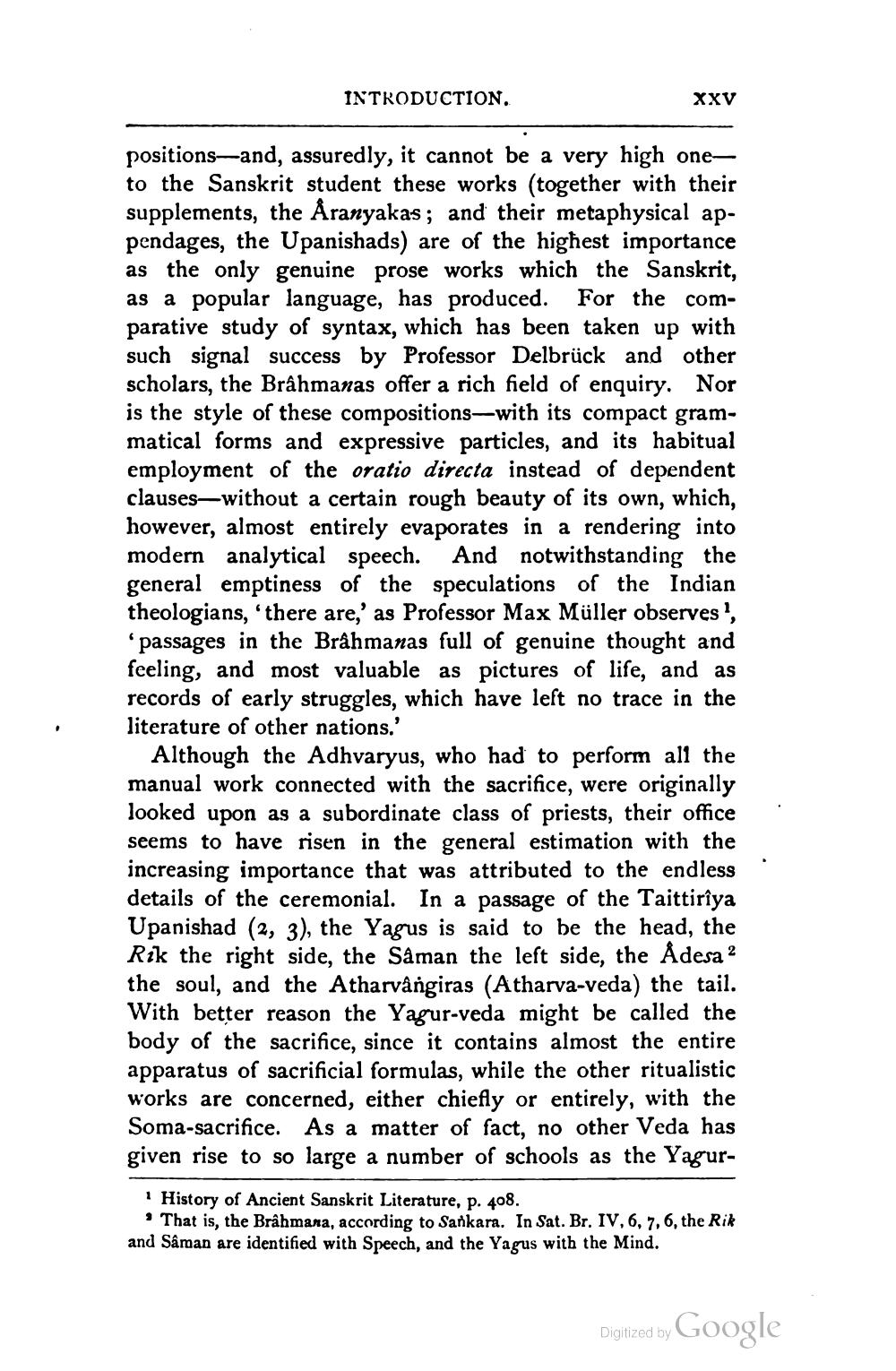________________
INTRODUCTION.
XXV
positions—and, assuredly, it cannot be a very high oneto the Sanskrit student these works (together with their supplements, the Aranyakas; and their metaphysical appendages, the Upanishads) are of the highest importance as the only genuine prose works which the Sanskrit, as a popular language, has produced. For the comparative study of syntax, which has been taken up with such signal success by Professor Delbrück and other scholars, the Brâhmanas offer a rich field of enquiry. Nor is the style of these compositions—with its compact grammatical forms and expressive particles, and its habitual employment of the oratio directa instead of dependent clauses—without a certain rough beauty of its own, which, however, almost entirely evaporates in a rendering into modern analytical speech. And notwithstanding the general emptiness of the speculations of the Indian theologians, there are,' as Professor Max Müller observes !,
passages in the Brahmanas full of genuine thought and feeling, and most valuable as pictures of life, and as records of early struggles, which have left no trace in the literature of other nations.'
Although the Adhvaryus, who had to perform all the manual work connected with the sacrifice, were originally looked upon as a subordinate class of priests, their office seems to have risen in the general estimation with the increasing importance that was attributed to the endless details of the ceremonial. In a passage of the Taittirîya Upanishad (2, 3), the Yagus is said to be the head, the Rik the right side, the Saman the left side, the Adesa 2 the soul, and the Atharvangiras (Atharva-veda) the tail. With better reason the Yagur-veda might be called the body of the sacrifice, since it contains almost the entire apparatus of sacrificial formulas, while the other ritualistic works are concerned, either chiefly or entirely, with the Soma-sacrifice. As a matter of fact, no other Veda has given rise to so large a number of schools as the Yagur
1 History of Ancient Sanskrit Literature, p. 408.
. That is, the Brahmana, according to Sankara. In Sat. Br. IV, 6, 7, 6, the Rik and Saman are identified with Speech, and the Yagus with the Mind.
Digitized by Google




